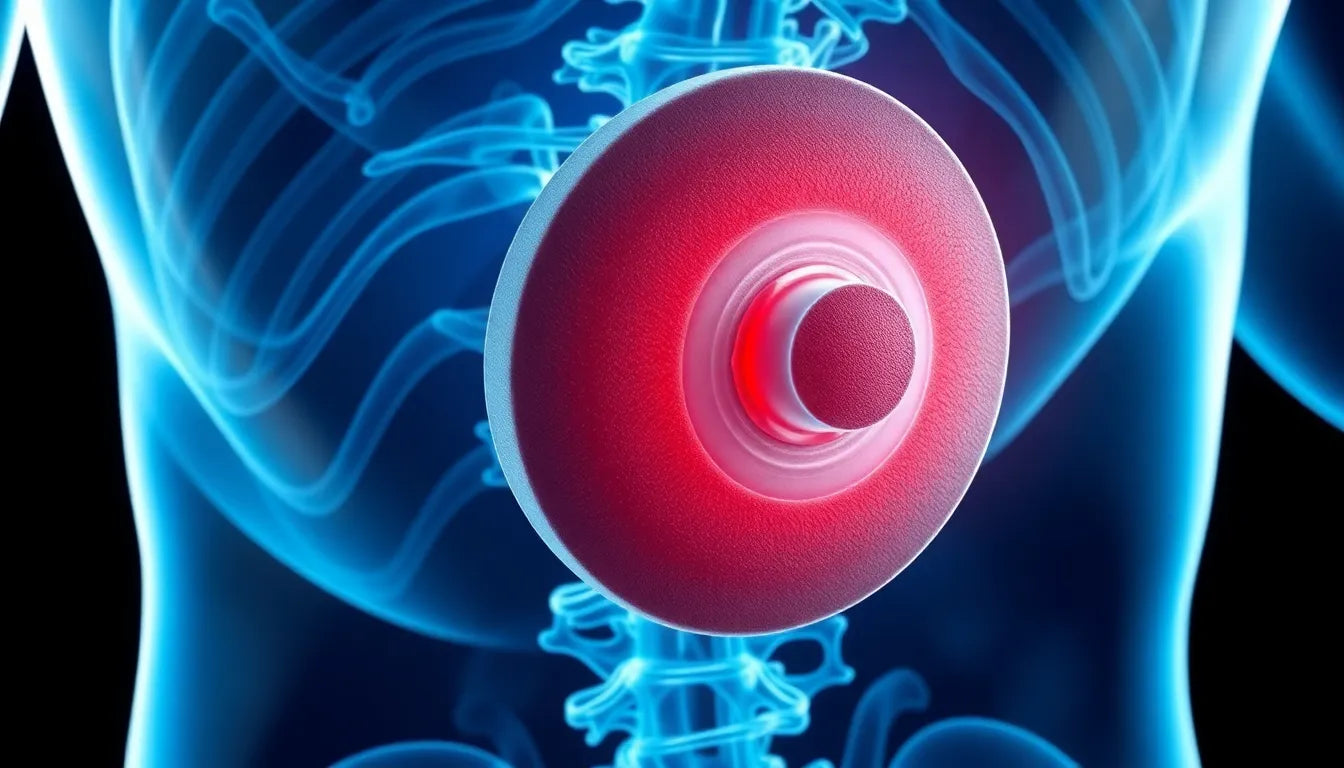For those grappling with a herniated disc, the decision to get behind the wheel can be fraught with uncertainty. The need to drive often clashes with the discomfort and potential health risks associated with this spinal condition. Herniated discs are more prevalent than many realize, affecting a significant portion of the population and making it crucial to understand how everyday activities, such as driving, can impact spinal health.
understanding herniated discs
A herniated disc occurs when the soft center of a spinal disc pushes through a crack in the tougher exterior casing. This condition predominantly affects the lumbar spine, which is the lower part of the back. Common symptoms include pain, numbness, and tingling, which can vary in intensity and may worsen with certain activities. These symptoms are often exacerbated by movements that place additional stress on the spine, such as prolonged sitting or repetitive motions.
driving and its impact on spinal health
This brings us to the critical question: is driving with a herniated disc putting your health at risk? Driving involves a combination of static posture and repetitive motions, both of which can place significant stress on the lumbar spine. For those with a herniated disc, this can lead to increased discomfort and potentially worsen symptoms. However, it's important to note that while driving might exacerbate symptoms, it does not structurally damage the disc itself.
In the sections that follow, we will delve deeper into the risks associated with driving when you have a herniated disc, explore preventive measures to mitigate these risks, and offer expert advice on how to maintain your spinal health while on the road. By understanding these aspects, you can make informed decisions about your driving habits and take proactive steps to protect your spine.
risk of driving with a herniated disc
Driving with a herniated disc presents unique challenges due to the biomechanical stress it places on the lumbar spine. When you drive, your body is subjected to vibrations and repetitive motions that can exacerbate the condition. Studies have shown that long hours behind the wheel can increase the risk of developing or worsening herniated discs, particularly in the lumbar region. This is because the static posture required for driving restricts movement, leading to increased pressure on the spinal discs.
biomechanical stress on the spine
The act of driving involves maintaining a static posture, which can significantly impact spinal health. This posture increases compression on the lumbar discs, disrupting their hydration and nutrient supply. Such conditions can lead to degeneration and potential herniation of the discs over time. The lack of movement during prolonged drives prevents the natural flow of fluids and nutrients, which are essential for disc health. This constant pressure can lead to discomfort and may intensify symptoms for those already suffering from a herniated disc.
impact on existing herniated discs
While driving does not cause structural damage to a herniated disc, it can certainly exacerbate symptoms. The lower lumbar discs, especially at the L5-S1 and L4-L5 levels, are often the most affected. These areas are prone to increased stress during driving, leading to intensified discomfort. It's crucial for individuals with this condition to be aware of how driving can affect their symptoms and take necessary precautions to manage their pain effectively.
risk factors vs. preventive measures
Understanding the risk factors associated with driving when you have a herniated disc is the first step in mitigating these risks. Below is a comparison table highlighting common risk factors and corresponding preventive measures:
| Risk Factors | Preventive Measures |
|---|---|
| Prolonged sitting | Take regular breaks to stretch and walk around |
| Improper seat alignment | Adjust the seat for optimal lumbar support |
| Static posture | Use sacral support and maintain good posture |
| Lack of movement | Utilize cruise control to shift positions periodically |
By implementing these preventive measures, individuals can reduce the risk of exacerbating their herniated disc symptoms while driving. These strategies not only help in managing existing discomfort but also play a crucial role in preventing further spinal issues.
In the next section, we will explore additional preventive measures and general health tips to support spinal health during long drives. Understanding how to adapt your driving habits can make a significant difference in managing a herniated disc effectively.
preventive measures for driving with a herniated disc
Driving with a herniated disc requires careful attention to posture and ergonomics. Implementing preventive measures can significantly reduce discomfort and help maintain spinal health. First, using sacral support is essential for aligning the spine and reducing pressure on the lumbar discs. Adjust your seat so that your knees are slightly lower than your hips, which helps maintain the natural curve of the spine.
Regular breaks are crucial. Aim to stop every hour or so to stretch and walk around. This movement promotes blood flow and relieves the static pressure on your spine. Utilizing cruise control can also help you shift positions periodically, reducing the strain of maintaining a static posture.
Additionally, consider using seat heating or cooling features to manage muscle tension and improve comfort during long drives. Staying hydrated is another simple yet effective measure, as dehydration can exacerbate muscle stiffness and discomfort.
general health and wellness tips
Beyond driving-specific strategies, general health and wellness practices play a vital role in managing a herniated disc. Engaging in regular back exercises strengthens the core muscles, providing better support for the spine. Focus on exercises that enhance flexibility and stability, such as yoga or Pilates, which are gentle on the back and promote overall spinal health.
Stress reduction techniques, such as meditation and deep-breathing exercises, can also be beneficial. Stress often leads to muscle tension, which can worsen back pain. Maintaining a healthy lifestyle, including a balanced diet and regular physical activity, supports overall well-being and can help manage symptoms associated with a herniated disc.
frequently asked questions
Can driving worsen a herniated disc?
Driving can exacerbate symptoms of a herniated disc due to the static posture and vibrations involved, but it does not structurally damage the disc itself.
What are the best practices for driving with a herniated disc?
Use ergonomic aids such as sacral supports, take regular breaks to stretch, and maintain good posture. Adjust your seat for optimal support and utilize cruise control to change positions periodically.
How can I set up my car seat to reduce back pain?
Adjust your car seat to ensure your knees are slightly lower than your hips, and use sacral supports if needed. This setup helps maintain the natural curve of the spine and reduces lumbar pressure.
Are there specific exercises I should do before or after driving?
Yes, stretching exercises focusing on the back and core-strengthening routines are beneficial. These exercises help relieve tension and support spinal health.
Is it safe to drive long distances with a herniated disc?
It depends on the severity of your symptoms. For personalized advice, consult with a healthcare provider to assess your condition and determine the best course of action for long drives.
By understanding and implementing these preventive measures and wellness tips, individuals with herniated discs can make informed decisions about their driving habits. This proactive approach not only helps manage current symptoms but also plays a crucial role in preventing further spinal issues.


















